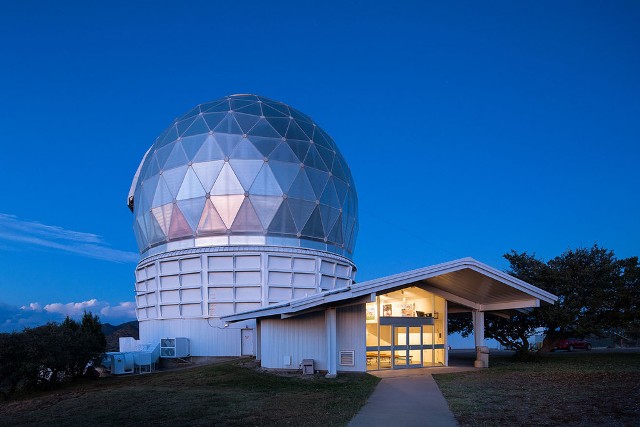Nov 6 2015
The Hobby-Eberly Telescope (HET), which Penn State and four other universities built and are operating, has opened a larger and sharper-imaging giant eye on the universe after getting a multi-year, $25 million upgrade. Able to use more of its primary mirror than was possible before, the telescope now ranks as the world’s third-largest optical telescope -- tied for the honor with the South African Large Telescope, which was patterned after the HET's design.
 The Hobby-Eberly Telescope. Credit:Ethan Tweedie Photography
The Hobby-Eberly Telescope. Credit:Ethan Tweedie Photography
Spurred by the HET collaboration’s desire to undertake large science projects, including the forthcoming Hobby-Eberly Telescope Dark Energy Experiment (HETDEX), the upgrade was a major undertaking that includes new optics, new mechanics, and new software. Today, HET is essentially a new telescope -- its primary mirror is the only component that remains unchanged.
Larry Ramsey, Distinguished Senior Scholar and Professor of Astronomy and Astrophysics at Penn State and chairman of the Board of Directors of the Hobby-Eberly telescope, said, "The entire HET community congratulates the McDonald Observatory team for achieving first light on the upgraded telescope. The revitalized HET will contribute to many areas of astrophysics, including the nature of dark energy and dark matter; the study of massive black holes; and the discovery, confirmation, and characterization of extrasolar planets."
The upgrade allows more of HET’s 10-meter by 11-meter mirror to be used, increasing its effective size from 9.2 meters to 10 meters. The telescope's improved image quality now is sharp enough to clearly see features just one mile across on the surface of the Moon. "This upgrade makes HET the most powerful wide-field spectroscopic telescope worldwide, and we expect unique scientific discoveries from it," said McDonald Observatory Director Taft Armandroff.
"The HET observers are quite excited about the scientific possibilities enabled by the upgrade of the telescope and the suite of new instrumentation that will become available in the next year," said Donald Schneider, Distinguished Professor and Head of the Penn State Department of Astronomy and Astrophysics and the HET Scientist.
One major component of the upgrade is the new Harold C. Simmons Dark Energy Optical System. This set of optics sits above the telescope’s main mirror, in the location usually occupied by a secondary mirror. McDonald Observatory chief scientist Phillip MacQueen designed the system. He explained that the Simmons System is a complex set of optics, including four mirrors, that achieves two key tasks. First, it brings light from the primary mirror into sharper focus. Second, it produces high-quality images over all regions of the telescope's greatly enlarged (increased by a factor of 120) field of view. The Simmons System is "one of the most complex optical systems ever deployed in astronomy," said Gary Hill, McDonald Observatory’s chief astronomer and principal investigator for the planned explorations of dark energy, HETDEX.
Ramsey and Daniel W. Weedman, formerly a professor of astronomy and astrophysics at Penn State, developed the concept for the HET, which was honored by Discovery Magazine with the Award for Technological Innovation in 1997 for its innovative, precision design. The innovative HET design so dramatically reduced construction costs that it opened the door to a new era for such large-sized telescopes, including South African Large Telescope.
The Hobby-Eberly Telescope is located at the McDonald Observatory in far West Texas, which has the darkest skies of any major observatory in the continental United States. It is a joint project of the University of Texas at Austin, Penn State University, Ludwig-Maximilians-Universitat Munchen, and Georg-August-Universitat Gottingen. The Hobby-Eberly Telescope saw light for the first time in 1996. After the 2015 upgrade, the next steps for the HET team are to complete the commissioning phase, then to move on to commissioning three new science instruments for the telescope.
The HET upgrade completed in 2015 was funded by a combination of federal, state of Texas, and private sources.